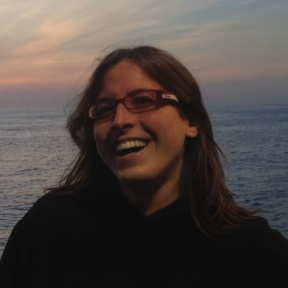Seabed Morphodynamics
A special issue of Geosciences (ISSN 2076-3263).
Deadline for manuscript submissions: closed (31 August 2022) | Viewed by 11041
Special Issue Editor
Special Issue Information
Dear Colleagues,
Although largely out of sight, the seabed supports a wide array of interconnecting services that increasingly underpin our daily lives. The seabed is instrumental in the delivery of, e.g., food, aggregates, minerals, energy, communications, recreation, genetic materials and biodiversity. The seabed also provides regulating services, including climate, nutrient cycling and flood prevention.
Seabed resources are, however, vulnerable to the effects of a mobile seabed, the consequences of which are predicted to increase due to ocean warming and rising sea level. The bathymetric variation of about 20% of Earth’s seabed has been mapped and used to inform marine spatial planning and decision making on a range of scales. This largely static picture of seabed bathymetry needs to become dynamic with knowledge of redistributing sediments (via, e.g., backscatter data and samples), mobile bedforms, altering habitats and the potential exposure of marine infrastructure.
Consideration of the changes in seabed morphology and in seabed composition over time will be essential in our efforts to maintain seabed integrity during the rapid rise in marine industrialisation. We need to know how rising sea levels, changing storminess, and heightened wave energy can fundamentally affect the rate, location and nature of seabed modification over the coming decades. We also need to take into account that the seabed is often heterogeneous and patchy, and that this complexity is influenced by, and in turn impacts, both physical and biological processes.
Through this collection, we would like to recognise and contribute to the growing need for seabed morphodynamical processes to be better documented, understood and/or predicted. In this fully funded open access format, this knowledge will become freely accessible to all users far beyond the academic, and should help seabed resource management, marine spatial planning and conservation.
Dr. Katrien Van Landeghem
Guest Editor
Manuscript Submission Information
Manuscripts should be submitted online at www.mdpi.com by registering and logging in to this website. Once you are registered, click here to go to the submission form. Manuscripts can be submitted until the deadline. All submissions that pass pre-check are peer-reviewed. Accepted papers will be published continuously in the journal (as soon as accepted) and will be listed together on the special issue website. Research articles, review articles as well as short communications are invited. For planned papers, a title and short abstract (about 250 words) can be sent to the Editorial Office for assessment.
Submitted manuscripts should not have been published previously, nor be under consideration for publication elsewhere (except conference proceedings papers). All manuscripts are thoroughly refereed through a single-blind peer-review process. A guide for authors and other relevant information for submission of manuscripts is available on the Instructions for Authors page. Geosciences is an international peer-reviewed open access monthly journal published by MDPI.
Please visit the Instructions for Authors page before submitting a manuscript. The Article Processing Charge (APC) for publication in this open access journal is 1800 CHF (Swiss Francs). Submitted papers should be well formatted and use good English. Authors may use MDPI's English editing service prior to publication or during author revisions.
Keywords
- marine conservation
- marine spatial planning
- resource management
- risk assessment
- seabed habitats
- seabed infrastructure
- seabed integrity
- seabed morphodynamics
- bathymetry
- backscatter
Benefits of Publishing in a Special Issue
- Ease of navigation: Grouping papers by topic helps scholars navigate broad scope journals more efficiently.
- Greater discoverability: Special Issues support the reach and impact of scientific research. Articles in Special Issues are more discoverable and cited more frequently.
- Expansion of research network: Special Issues facilitate connections among authors, fostering scientific collaborations.
- External promotion: Articles in Special Issues are often promoted through the journal's social media, increasing their visibility.
- Reprint: MDPI Books provides the opportunity to republish successful Special Issues in book format, both online and in print.
Further information on MDPI's Special Issue policies can be found here.





